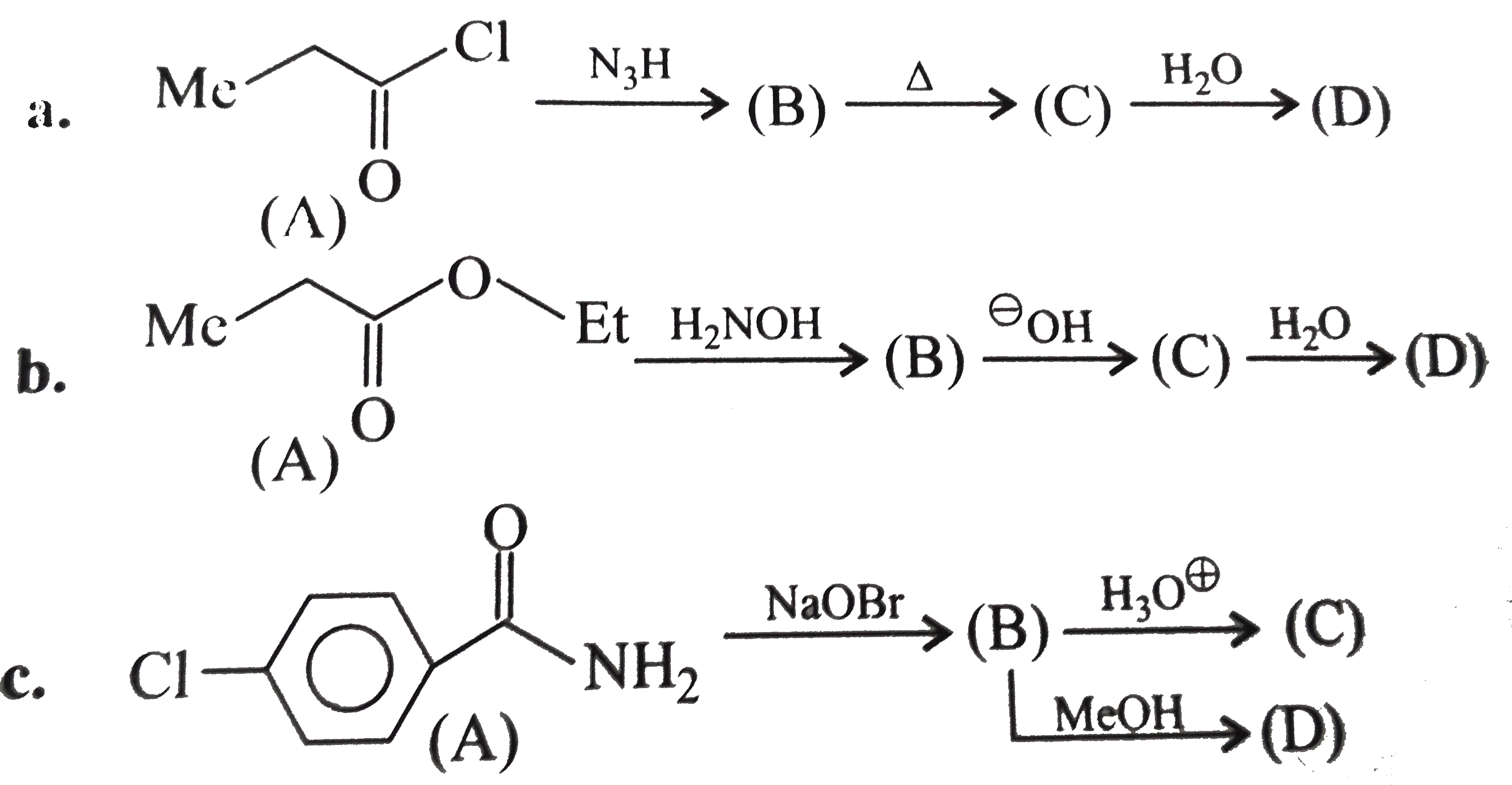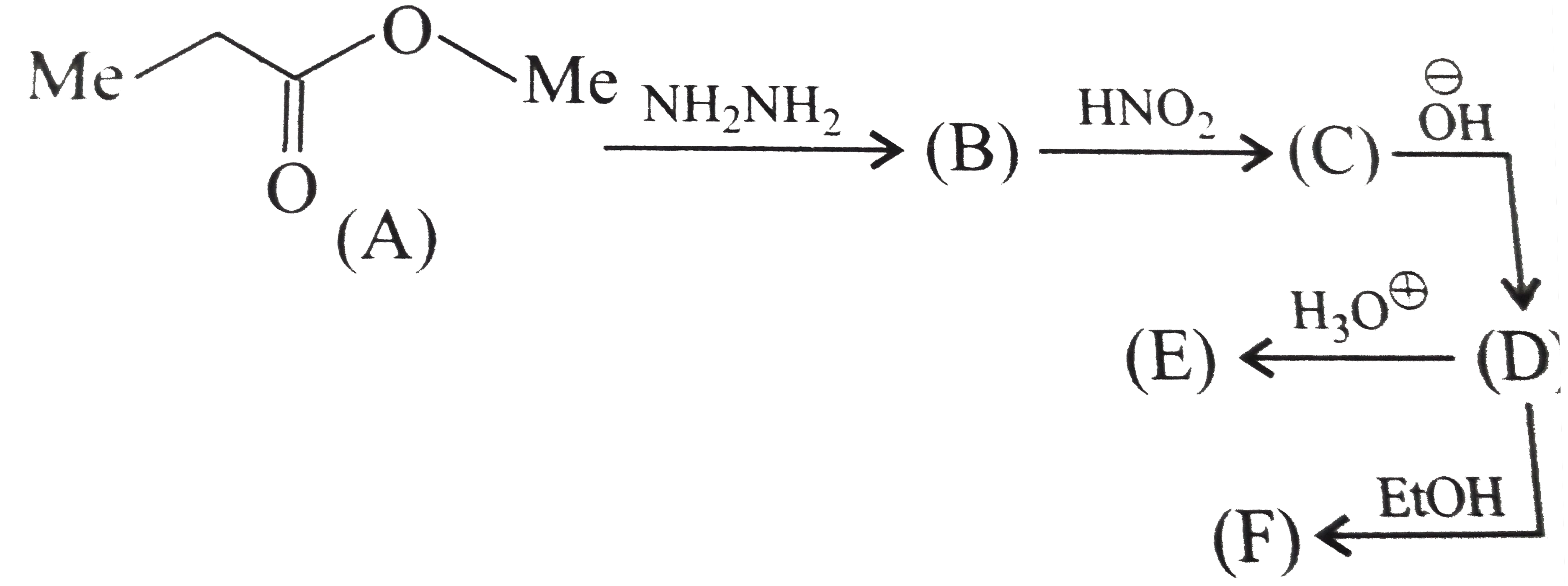At what concentration of [c−OH] does the following half reaction has a potential of 0V when other species are at 1M?
NOc−3+H2O+2e−→NOc−2+2c−OH,Ec−.cell=−0.06V
2.0M
1.0M
0.1M
0.01M
The correct Answer is:c
Ecell(red)=Ec−.cell(red)−0.0592log[c−OH]2
=−0.06−0.059log[c−OH]=0
[c−OH]=0.14
Topper's Solved these Questions
- ELECTROCHEMISTRYBOOK - CENGAGE CHEMISTRYCHAPTER - ELECTROCHEMISTRYEXERCISE - Ex 3.2 (Objective)
26 Videos
- ELECTROCHEMISTRYBOOK - CENGAGE CHEMISTRYCHAPTER - ELECTROCHEMISTRYEXERCISE - Ex 3.3 (Objective)
10 Videos
- ELECTROCHEMISTRYBOOK - CENGAGE CHEMISTRYCHAPTER - ELECTROCHEMISTRYEXERCISE - Solved Examples(Electrolysis And Electrolytic Cells)
12 Videos
- D AND F BLOCK ELEMENTSBOOK - CENGAGE CHEMISTRYCHAPTER - D AND F BLOCK ELEMENTSEXERCISE - Archives Subjective
29 Videos
- GENERAL PRINCIPLES AND PROCESS OF ISOLATION OF ELEMENTSBOOK - CENGAGE CHEMISTRYCHAPTER - GENERAL PRINCIPLES AND PROCESS OF ISOLATION OF ELEMENTSEXERCISE - Archives (Subjective)
14 Videos
Similar Questions
Knowledge Check
Consider the following standard reduction potential data to answer the next three questions Half-reactions. E∘(V)
NO−3+4H++3e−→NO(g)+2H2O(l)0.955V
NO−3+3H++2e−→HNO2+H2O(l)0.940V
O2+4H++4e−→2H2O1.23V
Pt2++2e−→Pt1.18V
V3++e−→V2+−0.255V
V3++2e−→V−1.20V
What is the E∘ of cell?
NO(g)+H2O+O2(g)→NO−3+H+A2.185VB−0.13VC0.275VD0.625VIn the following reaction what is A ?
(CH3)3C−NH2+3[O]Δ−−→(CH3)3C−NO2+H2OAKOHBKNO2CKMnO2DKNO2Consider the following standard reduction potential data to answer the next three questions Half-reactions. E∘(V)
NO−3+4H++3e−→NO(g)+2H2O(l)0.955V
NO−3+3H++2e−→HNO2+H2O(l)0.940V
O2+4H++4e−→2H2O1.23V
Pt2++2e−→Pt1.18V
V3++e−→V2+−0.255V
V3++2e−→V−1.20V
What is E∘ for
V→V3++3e−?A1.38VB0.885VC−0.835VD−1.38V
Rank the transition states that occur during the following reaction steps in order of increasing stability (least → stable)
1. H3C−+OH2→CH+3+H2O
2. (CH3)3C−+OH2→(CH3)3C++H2O
3. (CH3)2CH−+OH2→(CH3)2CH++H2O
View SolutionIdentify (C) in the following sequence of reactions :
H−O||C−H(1)CH3Mgl−−−−−−−−→(2)H2O/H+(A)NH3−−−−→C2H5OH(C)
View SolutionConsider the following carbocation-
(a). CH3−⊕CH2
(b). CH2=⊕CH
(c). CH2=CH−⊕CH2
(d). C6H5−C⊕H2
View SolutionRank the transition states that occur during the following reaction steps in order of increasing stability (least → most stable):
1.H3C−+OH2→CH+3+H2O2.(CH3)3C−+OH2→(CH3)3C++H2O3.(CH3)2CH−+OH2→(CH3)2CH++H2O
View SolutionIn the manufacture of sodium carbonate, following reactions are involved:
(A)Δ−−→(B)+CO2
(B)+H2O→(C)+NH4CI→(D)+H2O−−−−→ESolution
(E)+CO2→(F)
(F)+NaCI→(G)Heat−−→Na2CO3+CO2+H2O
(D) is a gas which is soluble in H2O
(C ) is
View Solution






